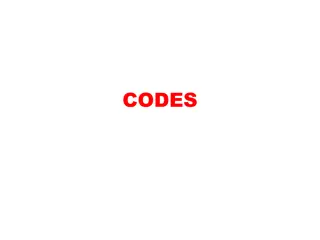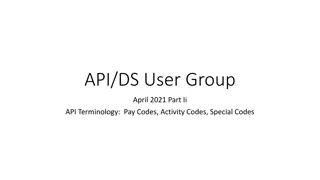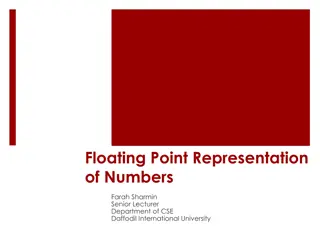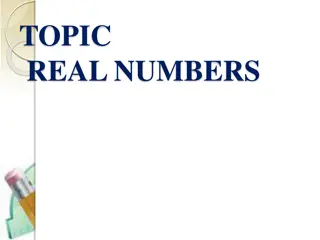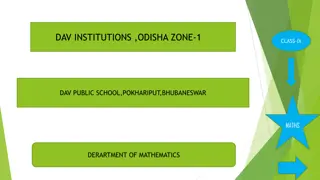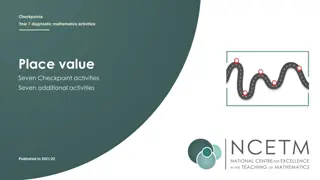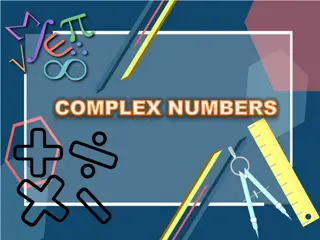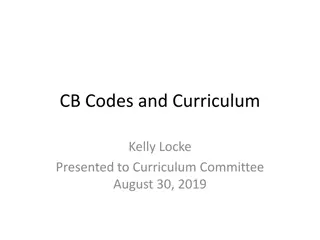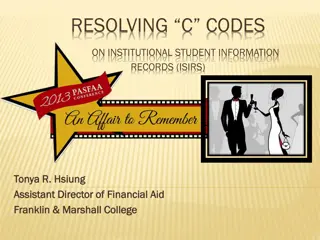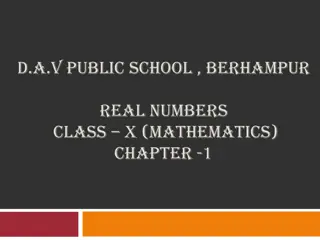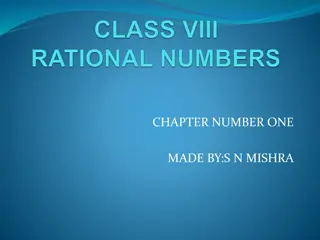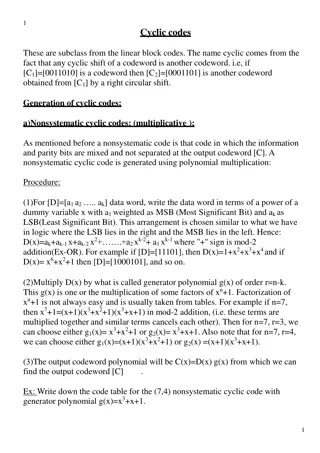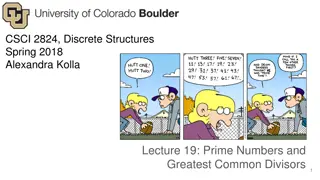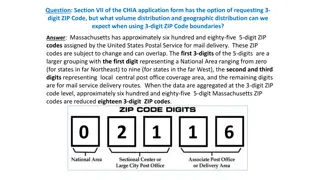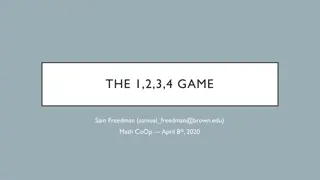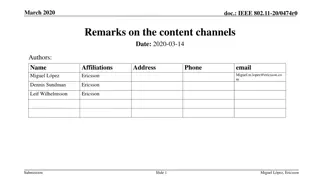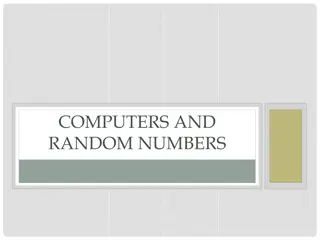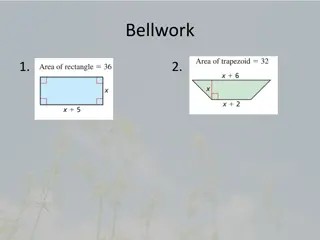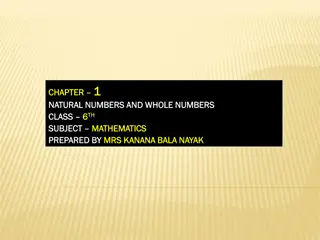Playing with Numbers: Understanding Digits and Codes
This chapter delves into the creative world of playing with numbers, exploring how numbers can be manipulated and represented using general forms, letters for digits, and divisibility rules. Learn how to decode arithmetic puzzles and test for divisibility with engaging examples and explanations.
Download Presentation

Please find below an Image/Link to download the presentation.
The content on the website is provided AS IS for your information and personal use only. It may not be sold, licensed, or shared on other websites without obtaining consent from the author.If you encounter any issues during the download, it is possible that the publisher has removed the file from their server.
You are allowed to download the files provided on this website for personal or commercial use, subject to the condition that they are used lawfully. All files are the property of their respective owners.
The content on the website is provided AS IS for your information and personal use only. It may not be sold, licensed, or shared on other websites without obtaining consent from the author.
E N D
Presentation Transcript
CHAPTER-16 PLAYING WITH NUMBERS
Numbers in General Form Let us take the number 52 and write it as 52 = 50 + 2 = 10 5 + 2 In general, any two digit number ab made of digits a and b can be written as ab = 10 a + b = 10a + b ba = 10 b + a = 10b + a
Let us now take number 351. This is a three digit number. It can also be written as 351 = 300 + 50 + 1 = 100 3 + 10 5 + 1 1 Similarly 497 = 100 4 + 10 9 + 1 7 In general, a 3-digit number abc made up of digits a, b and c is written as abc = 100 a + 10 b + 1 c = 100a + 10b + c In the same way, cab = 100c + 10a + b bca = 100b + 10c + a
Letters for Digits We have puzzles in which letters take the place of digits in an arithmetic sum , and the problem is to find out which letter represents which digit; so it is like cracking a code. Two rules we follow while doing such puzzles. 1. Each letter in the puzzle must stand for just one digit. Each digit must be represented by just one letter. 2. The first digit of a number cannot be zero
Example 1: Find Q in the addition. 3 1 Q + 1 Q 3 5 0 1 Solution: Study the addition in the ones column: from Q + 3, we get 1 , that is, a number whose ones digit is 1. For this to happen, the digit Q should be 8. So the puzzle can be solved as shown below. 3 1 8 + 1 8 3 5 0 1 That is, Q = 8
Example 2: Find A and B in the addition. A + A A B A Solution: Study the addition in the ones column: the sum of three A s is a number whose ones digit is A. Therefore, the sum of two A s must be a number whose ones digit is 0.This happens only for A = 0 and A = 5. If A = 0, then the sum is 0 + 0 + 0 = 0, which makes B = 0 too. We do not want this (as it makes A = B, and then the tens digit of BA too becomes 0), so we reject this possibility. So, A = 5. Therefore, the puzzle is solved as shown below. 5 + 5 + 5 1 5 That is, A = 5 and B = 1.
Example : Check the divisibility of 2146587 by 3. Solution: The sum of the digits of 2146587 is 2 + 1 + 4 + 6 + 5 + 8 + 7 = 33. This number is divisible by 3 (for 33 3 = 11). We conclude that 2146587 is divisible by 3. Example : Check the divisibility of 15287 by 3. Solution: The sum of the digits of 15287 is 1 + 5 + 2 + 8 + 7 = 23. This number is not divisible by 3. We conclude that 15287 too is not divisible by 3.


